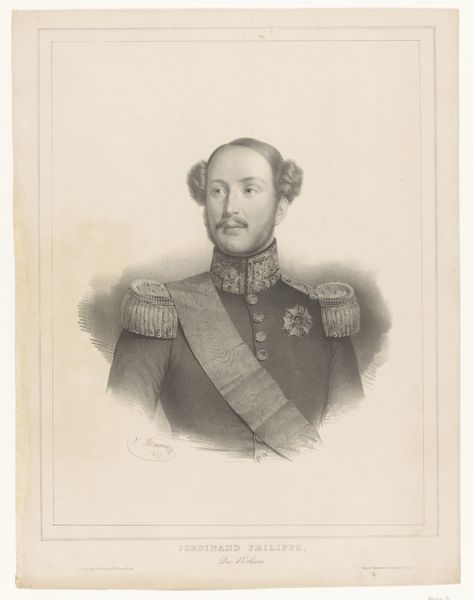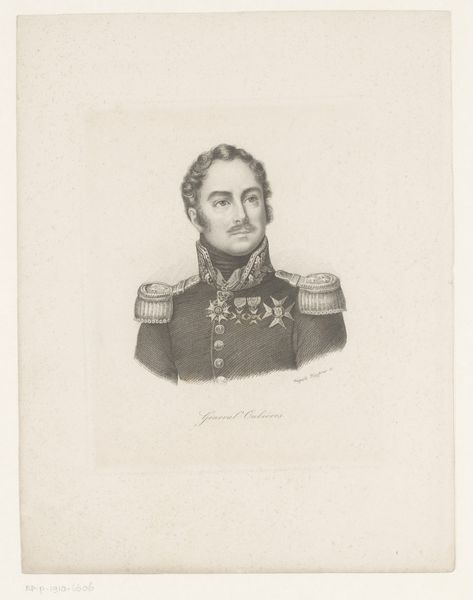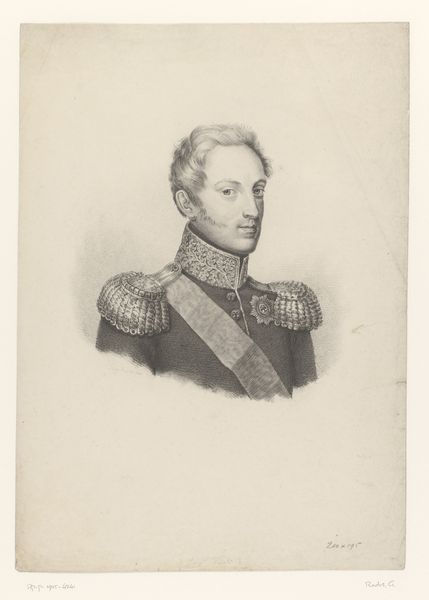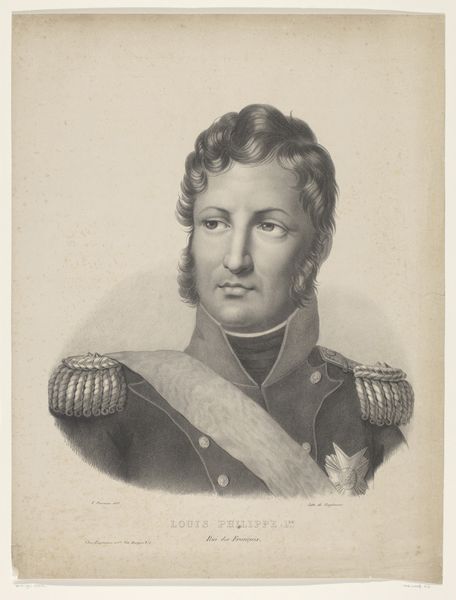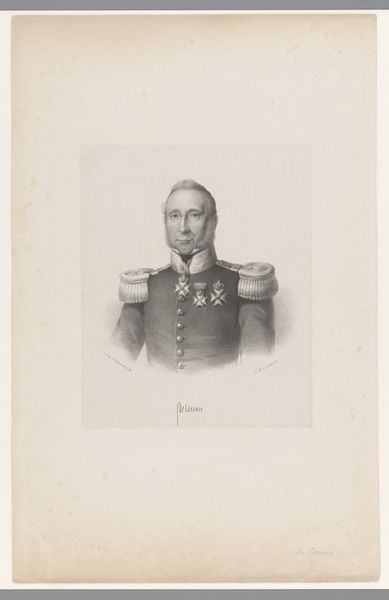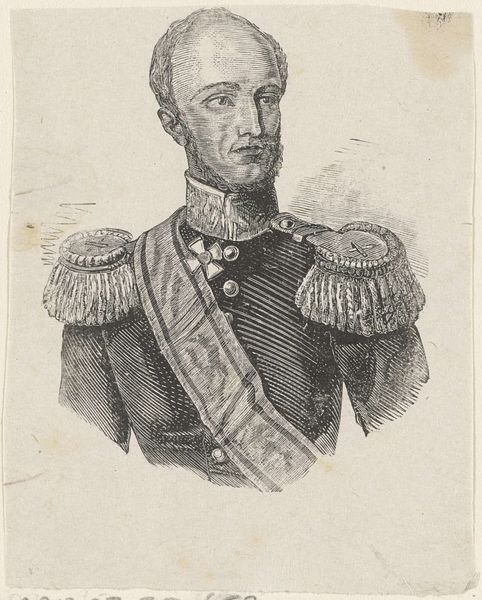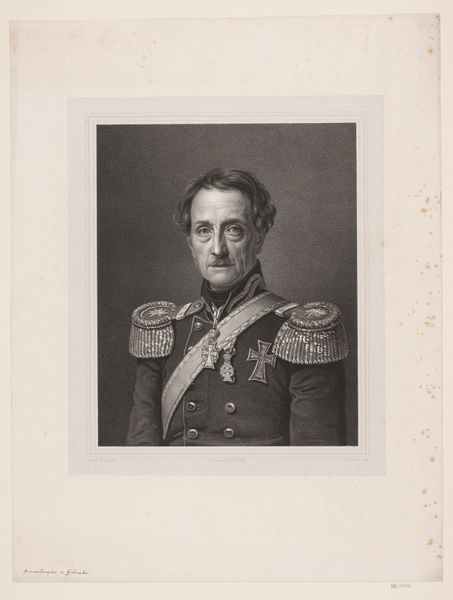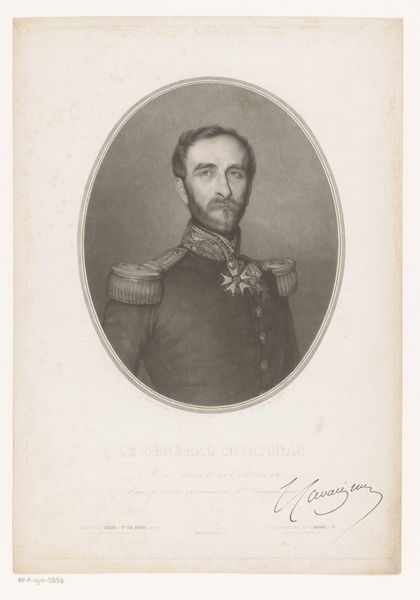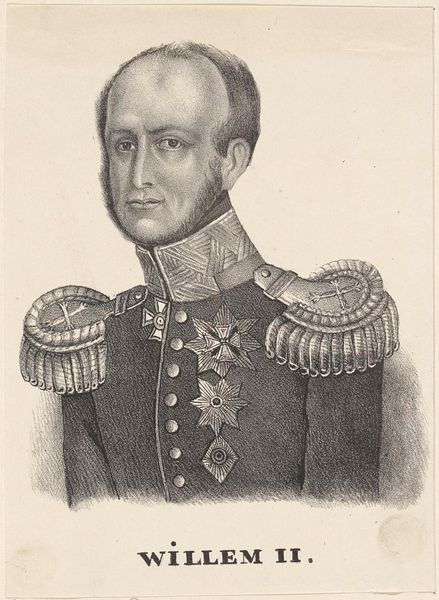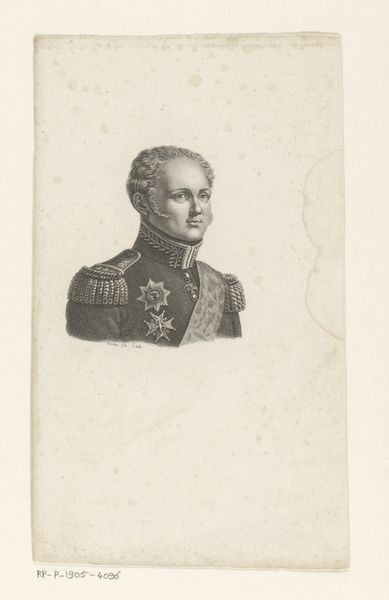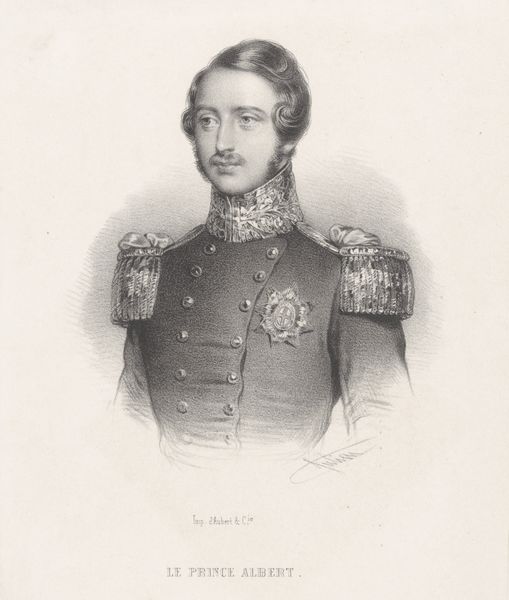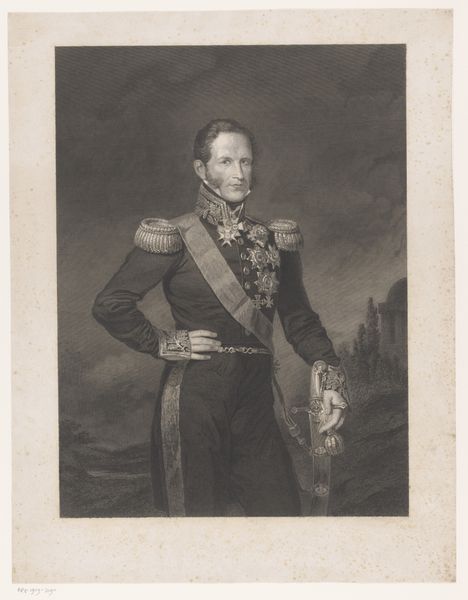
engraving
#
portrait
#
medal
#
neoclacissism
#
historical photography
#
history-painting
#
academic-art
#
engraving
Dimensions: height 157 mm, width 113 mm
Copyright: Rijks Museum: Open Domain
Editor: Here we have a portrait of Frederick William III, King of Prussia, made in 1833 by Friedrich Rossmässler. It's an engraving, giving it a somewhat formal and rigid feel. How do you interpret this work? Curator: This portrait offers a window into the power dynamics of 19th-century Europe, particularly through the lens of Prussian identity. Consider the king's gaze. Does it strike you as assertive, perhaps even a little severe? And what about the elaborate military regalia? How do they contribute to the construction of royal authority? Editor: I see what you mean. The medals and uniform definitely project power, but also seem a bit…oppressive, maybe? It makes me wonder about the king’s actual relationship with his people at the time. Curator: Exactly! We should question the intentions behind the representation and what kind of dialogue it encouraged—or suppressed. How might this image have been used to solidify a particular narrative around the monarchy, and who benefited from it? Was it about national pride, imperial expansion, or something else entirely? Editor: So it's not just about aesthetics, but about understanding how art can be used to promote certain ideologies? Curator: Precisely. By unpacking the symbolism and understanding the historical context, we can begin to analyze art's role in shaping perceptions and reinforcing or challenging dominant power structures. Editor: That's a perspective I hadn't fully considered. It encourages me to examine artwork with a more critical eye. Curator: I'm glad to hear that. By investigating who benefits from these portrayals, we gain valuable insights into the world beyond the art itself.
Comments
No comments
Be the first to comment and join the conversation on the ultimate creative platform.
